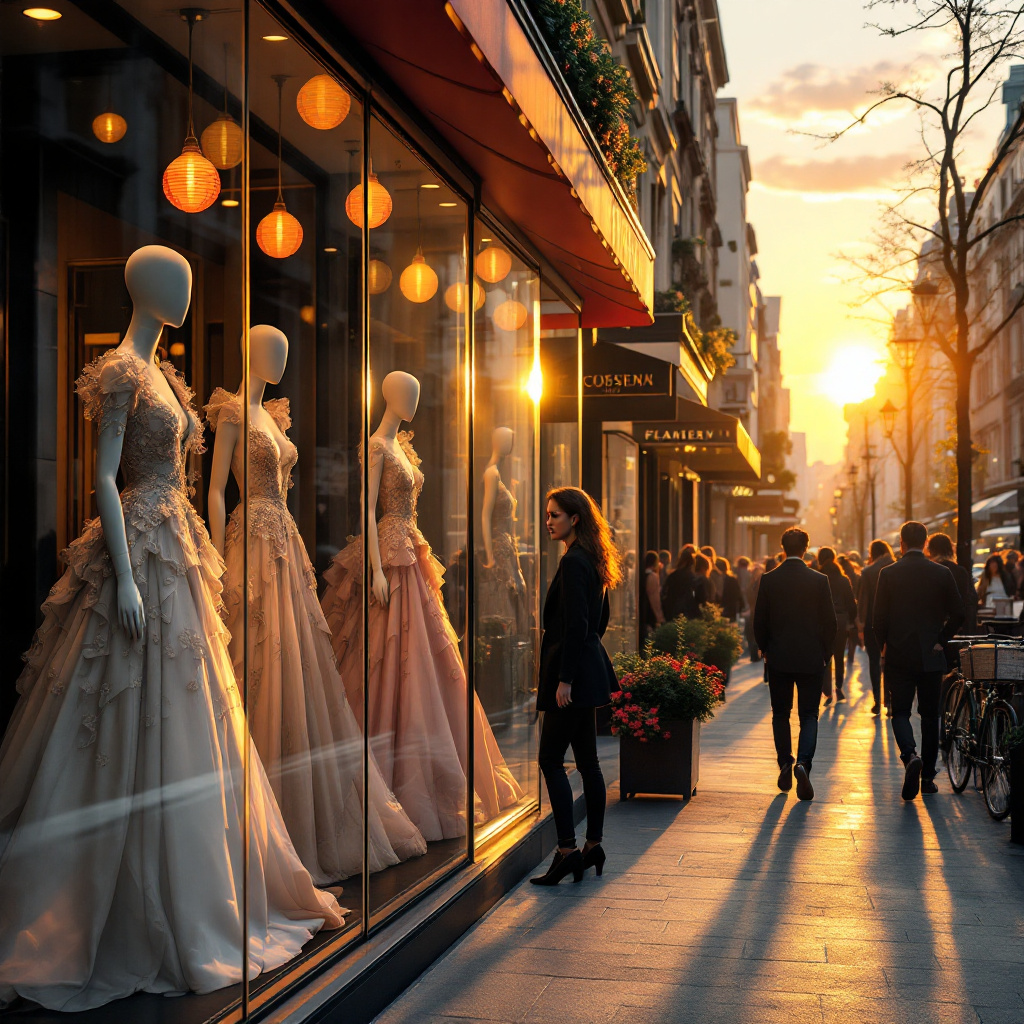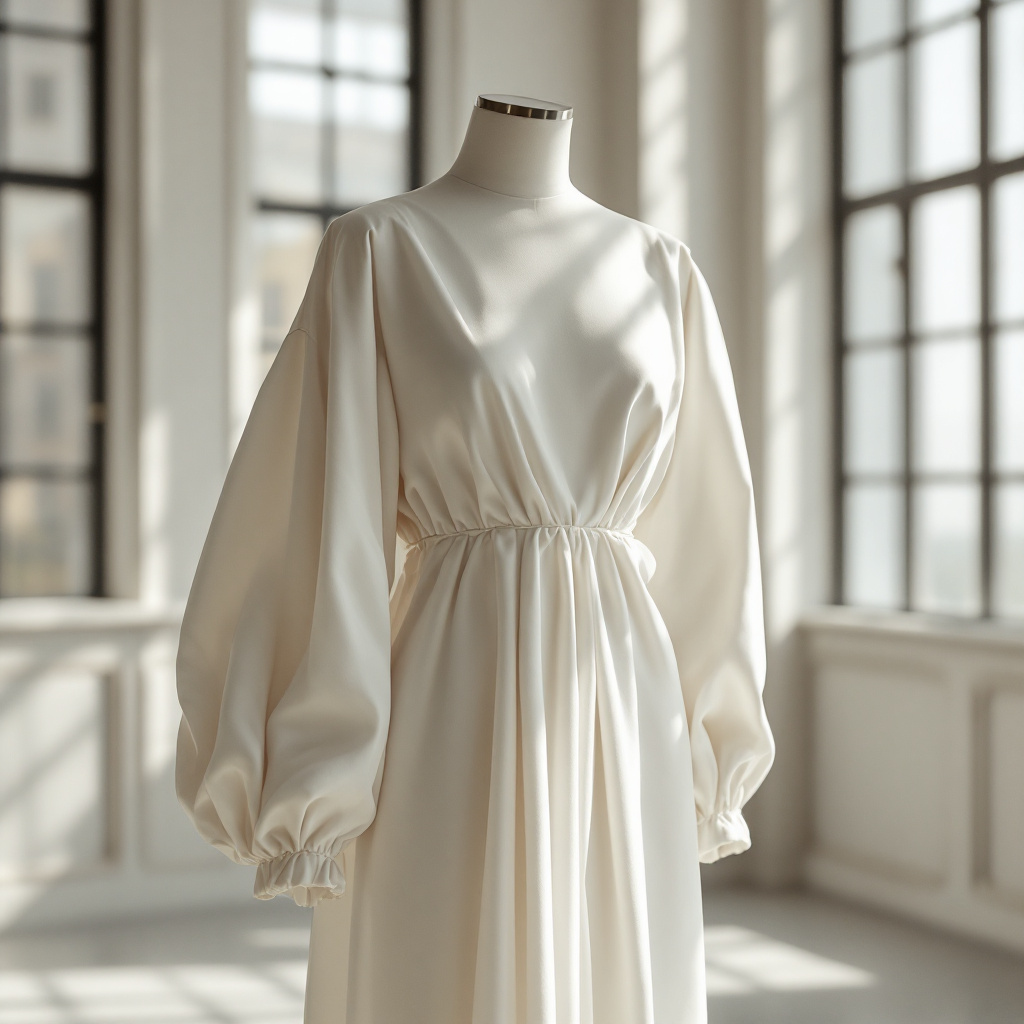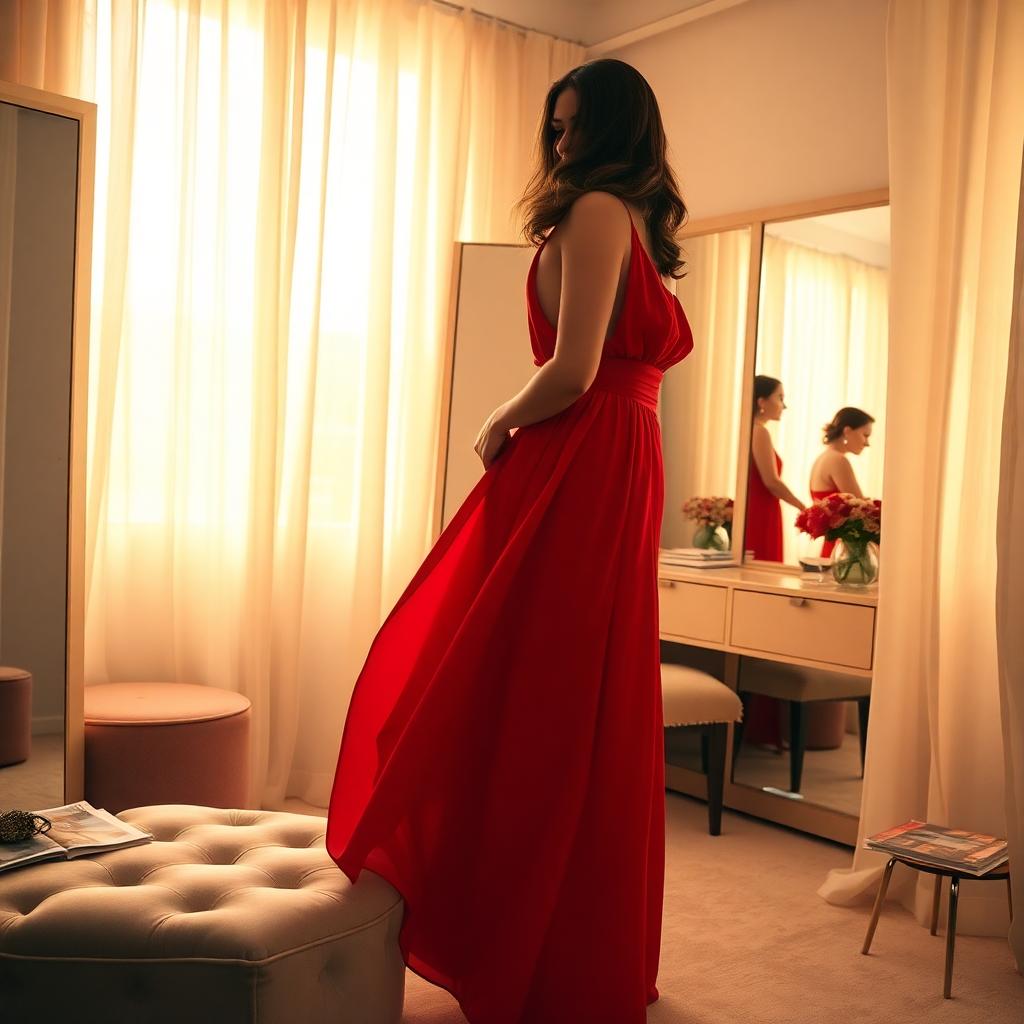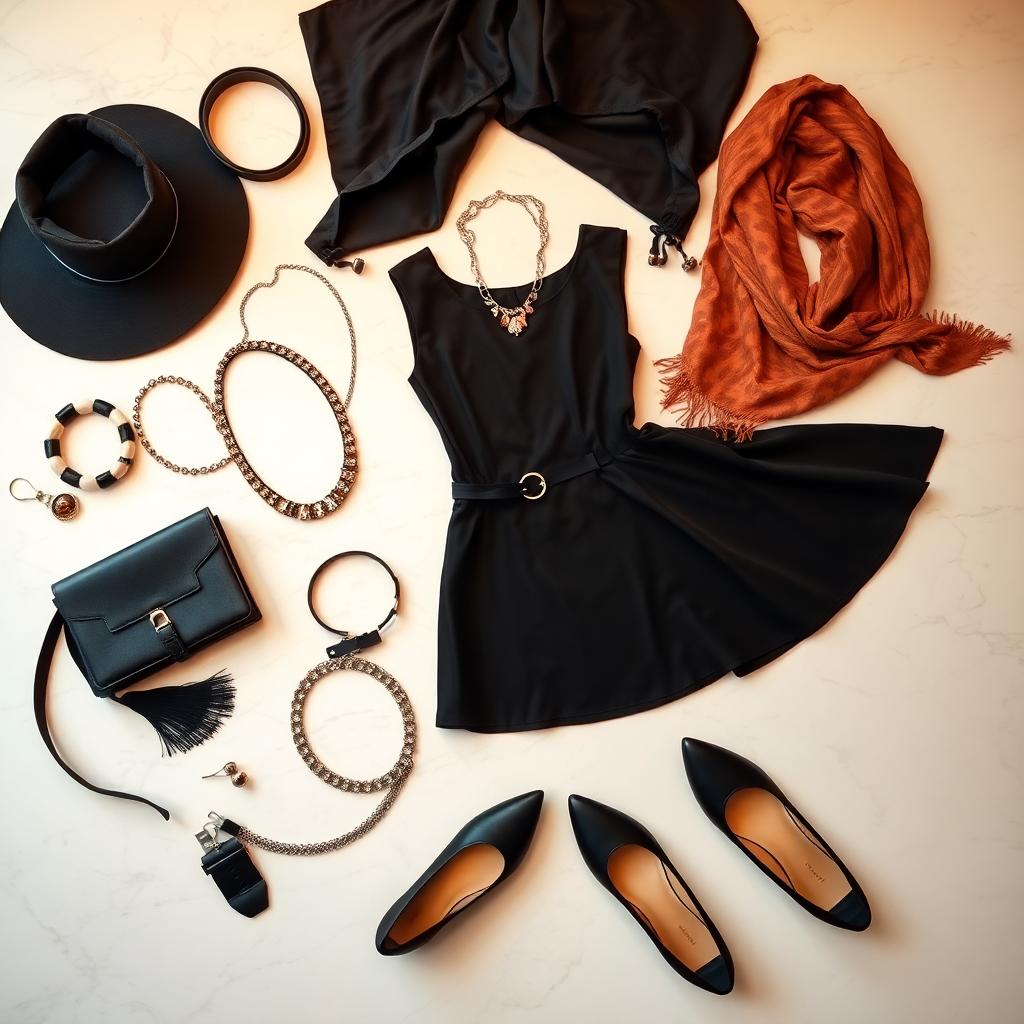Your cart is currently empty!
Finding the right dress fit can feel like a puzzle, but when you get it right, everything falls into place. A well-fitted dress doesn’t just look good—it makes you feel confident, comfortable, and ready for anything. Too tight, and it’s a distraction; too loose, and it loses the magic. This post will guide you through simple yet essential tips to make shopping easier, so you can spot the perfect fit and truly enjoy the clothes you wear.
Why Dress Fit Matters
Clothing is more than just fabric stitched together—it’s an extension of how you present yourself to the world. But even the most stunning dress can fall flat if the fit isn’t right. A great fit isn’t just a matter of aesthetics; it’s a cornerstone of confidence, comfort, and style. Let’s explore exactly why getting the fit right is so important.
The Role of Fit in Style
Think about the most well-dressed people you know. Chances are, their clothing always seems to complement their body shape perfectly. That’s no accident. When a dress fits well, it does more than wrap you in fabric—it enhances your silhouette, balances proportions, and creates a polished, intentional appearance.
The perfect fit shapes how a garment sits on your body, whether it’s a snug sheath dress hugging curves or a flowing A-line that drapes just right. For example:
- A tailored waistline defines your natural shape.
- The correct hem length elongates your legs or adds height.
- Shoulder seams that align properly refine posture and structure.
If the dress is too loose, it can drown your frame and make you appear shapeless. Too tight? It not only restricts movement but also distracts from your appearance. On the flip side, a dress that embraces the uniqueness of your body brings harmony to your overall look and makes every detail—from patterns to accessories—work effortlessly.
Fine-Tuning Your Confidence
Have you ever worn something that didn’t quite fit, spending the whole day tugging at hemlines or adjusting straps? It’s exhausting and chips away at how you feel about yourself. When your clothing fits well, all those distractions melt away, leaving room to focus on what truly matters.
Wearing a dress that fits properly feels like armor for your confidence. It allows you to stand taller, move freer, and shine brighter. You’re not second-guessing your appearance in the mirror or worrying about how it looks from the back. Instead, you feel secure in how the dress fits, lays, and flows.
More importantly, a good fit ensures comfort. Without it, even high-end pieces can feel awkward, while a perfectly fitted dress—no matter the price tag—will make you look and feel like a million bucks. As they say, confidence is the best accessory, and a flawless fit might just be its secret ingredient.
Key Components of a Perfect Fit
Achieving the perfect fit in a dress isn’t just about aesthetics—it’s about feeling at ease and confident in what you’re wearing. The way a dress hugs your body or flows freely can define how you carry yourself in any setting. Let’s break down the key areas that make the difference when evaluating a dress fit.
Shoulders and Sleeves
The shoulder seams of a dress should naturally align with the edge of your shoulder bone. If the seams droop past this point, the dress can look oversized and unstructured. Conversely, if the seams land further in, it might feel restrictive and awkward. Your shoulders create the backbone of structure for your outfit, and proper alignment here sets the tone for a polished look.
Sleeves are just as crucial. Are they too tight when you extend your arms? Do they sit awkwardly when bent? The length matters too: long sleeves should hit just at the wrist for elegance, while shorter sleeves need to be comfortable and stylish without restricting movement. Always check for functionality—whether you’re reaching for a coffee mug or raising a toast, your sleeves should look and feel right.
Bust and Waist Alignment
The bust and waist are where a dress truly wraps your body, so sizing here is key to eliminating discomfort or unwanted gaps. The fabric at the chest area should lie flat against your skin without puckering or pulling. A perfect fit at the bust should feel natural—too tight and it looks forced; too loose and it leaves you fidgeting throughout the day.
Your waist serves as the natural midpoint, and a good fit will highlight or contour this area gently. It shouldn’t pinch, wrinkle, or create awkward bunching. To get it right, rely on precise body measurements. If you’re unsure, think of tools like a measuring tape as a small commitment to a big payoff—a dress that looks custom-made.
Key tip: Dresses with adjustable waistbands or strategic seams (like princess seams) offer flexibility, especially if you fluctuate sizes or are looking for extra comfort.
Length and Hemline
Choosing the correct length is not just about personal preference; context matters too. A mini-dress may shine for a fun night out, while a mid-length or maxi is more appropriate for work or formal events. The hemline’s placement can also impact how tall or proportional you look.
When trying a dress, watch how the hemline behaves when you walk or sit. Does it rise uncomfortably, or does it get in the way of movement? If the hem feels too rigid or bulky, it could disrupt the flow of the dress and your comfort. Clean hemlines with slight allowances are often best—they’re functional and stylish, ensuring you feel properly dressed no matter where your day leads.
Practical Tips for Shopping Success
The perfect dress isn’t just about the design or the print—it’s all about the fit. Shopping for dresses can be overwhelming, especially with inconsistent sizing across brands. But it doesn’t have to be a guessing game. By understanding your body and practicing a few shopping strategies, you can navigate stores and dressing rooms like a pro.
Understand Your Body Measurements
Knowing your body measurements is a game-changer when it comes to shopping for dresses. Online or in-store, measurements are more reliable than relying on size tags that often vary between brands. Grab a measuring tape and note your bust, waist, and hips—these are the key areas for finding a proper fit.
Here’s how to measure accurately:
- Bust: Wrap the measuring tape around the fullest part of your chest while keeping it level.
- Waist: Find the narrowest point above your belly button and hold the tape snug (but not tight).
- Hips: Measure around the widest part of your hips, typically at the top of your thighs.
Keep these numbers in your phone for quick reference while shopping. Many websites and stores include a sizing chart—compare your measurements to theirs to narrow down options before trying anything on.
The Power of Dressing Room Tests
Dressing rooms are where the magic—or the misfires—happen. Here’s the truth: a dress may look perfect on the hanger or model, but it’s all about how it fits when you move. When trying on dresses, don’t just check how it looks standing still; put it through real-life tests.
- Sit down and stand up: Does the fabric bunch awkwardly or feel restrictive? A snug fit shouldn’t become uncomfortable in motion.
- Raise your arms: This ensures no pulling in the shoulder seams or awkward tightness around the bust.
- Check for wrinkles or tugging: Examine yourself from all angles to make sure there’s no pulling across the waist, hips, or back, as these are signs the garment is too tight.
- Feel for comfort: No amount of style is worth sacrificing how you feel. Can you breathe, move, sit, and walk comfortably? Then it’s worth considering.
If the store allows, snap a quick picture in the dress—sometimes what you don’t notice in the mirror is clear in a photo.
When to Invest in Tailoring
Even with your best shopping efforts, sometimes the perfect fit is slightly out of reach—but that’s OK. Tailoring can transform a “just fine” dress into one that looks custom-made. So when should you invest in alterations?
- If a dress fits well in key areas like the shoulders or bust but needs adjustment in length or waist, it’s worth taking to a tailor.
- Pieces with high-quality fabric or timeless designs are better candidates for tailoring, as they’re more likely to stay in your wardrobe for years.
- A small nip at the waist or adjusting the hem can make a huge difference in fit and proportion. These are straightforward changes that tailors can do inexpensively.
Think about the long-term value. A slightly higher upfront cost for professional tailoring can make even a sale rack dress look like couture. Plus, wearing something that fits your body like a glove is an instant boost to your confidence.
Keep these tips in mind during your shopping trips, and you’ll not only avoid ill-fitting purchases but also build a wardrobe that’s truly built for you.
Common Fit Mistakes and How to Avoid Them
When shopping for dresses, it’s easy to miss the mark with fit. Whether it’s settling for a size that’s “close enough” or ignoring the importance of what’s underneath, these common errors can turn an otherwise stunning dress into a regret. With a few mindful changes, you can sidestep these pitfalls and ensure every piece looks—and feels—just right.
The Myth of ‘Almost Fits’
We’ve all done it: bought a dress hoping it might work after a little tweaking or stretching. But here’s the hard truth—settling for a “near-fit” rarely works out. A dress that’s too tight will restrict movement, highlight unintended areas, and may even wear out faster due to strain. On the other hand, oversized clothing can drown your shape, leaving you looking unpolished.
What should you look for instead? Focus on these key areas:
- Seams and proportions: The shoulder seams should align naturally, and the waistline should sit where it was designed to, whether at your natural waist or as part of a specific style.
- Comfort and movement: Try moving in the dress—sit, twist, and walk. If it feels like you’re forcing it to fit, it’s not the right choice.
- Tailoring potential: If the fit is close but still off, check if minor adjustments (like hemming or nipping the waist) can be done by a tailor. A dress worth keeping should serve as a strong foundation, not a project.
Remember, a dress that fits well doesn’t just look good; it makes you feel ready to own the moment.

Photo by Yaroslav Shuraev
Overlooking Undergarments
The right dress fit begins beneath the fabric. Your choice of lingerie and shapewear isn’t just about coverage—it significantly impacts how your dress looks. Ill-fitting undergarments can create lumps, lines, and awkward bulges, while well-chosen pieces smooth and enhance your silhouette.
Here’s how to get it right:
- Invest in basics: Seamless underwear and nude tones are your best friends for a polished look. For tighter dresses, consider shapewear that supports without suffocating.
- Bra matters: A properly fitted bra is a game-changer. Many women wear the wrong size, leading to gaps in the bust area or discomfort. Don’t hesitate to get measured by a professional.
- Match under the dress: Strapless dresses call for strapless bras; plunging necklines may need adhesive bras or supportive cups.
A dress might be beautiful on its own, but the wrong foundation can skew the entire look. Think of undergarments as your secret weapon—they keep everything in place, building the confidence you need to shine.
Building Your Style Foundation
Finding your perfect dress fit starts long before you step into a dressing room. It’s about curating a wardrobe filled with versatile, flattering pieces that reflect your personal style. A strong style foundation simplifies shopping, dressing, and accessorizing—saving you time while boosting your confidence. Here’s how to build a closet that works for you.
Investing in Timeless Pieces
When it comes to building your wardrobe, think longevity. Timeless dresses are more than just trends—they’re staples you can reach for repeatedly, in various contexts, and still feel polished. These pieces anchor your style and reduce the need for constant replacements. What’s more, they can be styled in endless ways to suit any occasion.
Investing in timeless pieces means prioritizing quality over quantity. Here are a few must-haves to get started:
- A perfectly tailored little black dress (LBD): Whether you’re attending a party, wedding, or business meeting, the LBD is always a safe bet.
- A sleek shirt dress: Great for work, casual outings, or even weekend brunch; this piece is as functional as it is stylish.
- A minimal A-line dress: Universally flattering and versatile, it’s perfect for layering or standing out on its own.
- Neutral-toned maxi or midi dress: This is the piece you’ll appreciate on both your laziest and most special days.
The key? Ensure these dresses fit beautifully, with seams that align perfectly with your body, fabrics that drape elegantly, and lengths tailored to your lifestyle. A fitted dress made from durable, classic materials like cotton blends, silk, or wool can outlast fast-fashion purchases by years.
Mixing and Matching for Different Looks
Once you have a few timeless staples in your wardrobe, the fun begins. The beauty of owning well-fitted classic dresses is their ability to transform based on how you style them. With a little creativity, you can stretch even a small wardrobe into dozens of unique outfits.
Here’s how you can switch it up:
- For casual outings: Pair a shirt dress with sneakers, a denim jacket, and a crossbody bag.
- For professional settings: Layer that same shirt dress with a sleek blazer and accessorize with a structured tote and loafers.
- For formal events: Add a statement belt, delicate jewelry, and a pair of strappy heels to elevate the look.
Even your little black dress can take you from a chic daytime lunch to a glamourous evening event. Try these quick style tweaks:
- Daytime brunch: Throw on a lightweight cardigan and ankle boots.
- Glam evening: Add metallic heels, chandelier earrings, and a bold red lip.
Accessories are your secret weapon here. Necklaces, belts, scarves, and shoes can instantly shift the vibe of an outfit. It’s like having a painter’s palette—you only need a handful of colors to create something stunning.
By investing in well-fitting, timeless dresses and using clever styling tricks, you lay the groundwork for a wardrobe that’s both chic and adaptable. Dressing will no longer feel like a chore—it’ll become a creative way to express yourself effortlessly.
Conclusion
The perfect dress fit is not just a detail—it’s the foundation of style and confidence. When your clothes fit like they were made for you, they accentuate your best features, make movement effortless, and empower you to tackle any moment with assurance.
As you shop, prioritize how a piece feels and moves with you. Don’t settle for “almost fits” or compromise comfort. Remember, tailoring can transform a close fit into perfection, so don’t hesitate to make small adjustments for big impact.
Next time you’re browsing racks or scrolling online, make fit your focus. A well-fitted dress isn’t just an addition to your wardrobe—it’s a game-changer for how you present yourself to the world. Let fit take the lead, and everything else will fall into place.
Powered by Azon AutoSites
Related Posts

Technical Analysis: 4 Stocks with signs of death crossovers to keep an eye on

HDFC Bank & 3 other fundamentally strong stocks trading above 200 DMA to keep an eye on

Falling Channel Breakout: Multibagger NBFC Stock Shows Bullish Momentum on Daily Chart

4 Fundamentally strong stocks to buy for an upside potential of up to 36%; Do you hold any?






Leave a Reply